Introduction: Everest Base Camp Trekking 2025/2026
Everest Base Camp Route leads to a zone that has attracted notable figures like George Mallory, Sir Edmund Hillary, and Tenzing Norgay since the 1920s. Explore the rich diversity of the region, breathtaking natural scenery, and unique Sherpa culture. Discover the quaint monasteries and museums along the trekking trail. Join the company of like-minded adventurers who share the sheer pleasure of prayer wheels, prayer flags, and swinging bridges during the day. Converse with your new-found friends around the dining room fire in the evening. On the Everest Base Camp Trekking route, iconic Kala Patthar (5545m) provides you with breathtaking scenery of the Everest Region while Namche Bazaar mesmerizes you with its history, culture, and diversity.
Everest Base Camp Trek begins in Kathmandu, a city alive and full of energy. Next, it takes you through the Everest Region before ending returning to Kathmandu. Starting with the short and scenic flight to Tenzing-Hillary Airport in Lukla, you trek through the trail marked with diversity. Walking through unique villages from lukla to, Phakding, Benkar, Monjo, Jorsale, and others. Along the way, you will find several monasteries, chortens, and prayer wheels. You will cross suspension bridges clad with prayer flags. Observe the wildlife and scenery of Sagarmatha National Park. Trek along the torrential Dudh Koshi River (the Milky River) until you reach the buzzing Namche Bazaar. Namche is a true Himalayan town with exciting shops, fabulous food, stunning views, and culture. Namche Bazaar is also a traditional trading hub that paves your way further up to the ancient monasteries in Tengboche and Dingboche.
After sufficient acclimatization at a lower altitude, you head for the beautiful Gorak Shep and the iconic Kala Patthar for a surreal view of the Himalayas. Kala Patthar is famous for its breathtaking view of glittering peaks including Mt.Everest, Mt. Nuptse, Mt. Pumori, Mt. Lhotse, and Mt. Changtse. Not only can you see the stunning mountains, but you will also be able to view the majestic Khumbu Glacier, the famed Khumbu Icefall, the glacial rivers, and avalanche paths. Returning back from the high Himalayas, you shall explore the authentic lifestyle of the Sherpa community and get insider insight into the rich cultural heritage of these legendary people. End the trekking in Lukla before returning to the medieval capital city of Kathmandu.
Everest Base Camp can be trekked through out the year, with March to May and September to December being the best timefor this trek. Join Nepal Trekking Planner for this trek to make sure you get the best out of the trip. With good preparation on your part and carefully planned itineraries, the comfort and safety of the trekkers as the priority on our part, this trek for sure shall be leaving behind many valuable memories. Explore the region if you want to do something different, something challenging, and something adventurous in your life.
Everest Base Camp Trekking: 15 Days Altitude and Distance Coverage
Day | Activity | Altitude (m/ft) | Distance (km/miles) | Duration (hours) |
1 | Arrival at Tribhuvan International Airport, Kathmandu | 1,350 m / 4,430 ft | - | - |
2 | Full day sightseeing in Kathmandu | 1,350 m / 4,430 ft | - | - |
3 | Flight to Lukla and trek to Phakding | 2,860 m / 9,383 ft 2,610 m / 8,563 ft | 7.5 km / 4.66 miles | 3-4 hrs |
4 | Trek to Namche Bazaar | 3,440 m / 11,287 ft | 11.5 km / 7.14 miles | 5-6 hrs |
5 | Rest/acclimatization day at Namche Bazaar | 3,440 m / 11,287 ft | - | - |
6 | Trek to Tengboche | 3,860 m / 12,664 ft | 9.5 km / 5.9 miles | 4-5 hrs |
7 | Trek to Dingboche | 4,350 m / 14,271 ft | 11 km / 6.84 miles | 5-6 hrs |
8 | Rest/acclimatization day at Dingboche | 4,350 m / 14,271 ft | - | - |
9 | Trek to Lobuche | 4,910 m / 16,109 ft | 8.5 km / 5.28 miles | 4-5 hrs |
10 | Trek to Gorakshep and Everest Base Camp (round trip) | 5,164 m / 16,942 ft 5,364 m / 17,598 ft | 15 km / 9.32 miles | 7-8 hrs |
11 | Hike to Kala Patthar and trek to Pheriche | 5,545 m / 18,193 ft 4,280 m / 14,042 ft | 13 km / 8.07 miles | 6-7 hrs |
12 | Trek to Namche Bazaar | 3,440 m / 11,287 ft | 14.5 km / 9 miles | 5-6 hrs |
13 | Trek to Lukla | 2,828 m / 9,279 ft | 18.5 km / 11.5 miles | 6-7 hrs |
14 | Fly back to Kathmandu | 1,350 m / 4,430 ft | - | 35 mins |
15 | Transfer to airport and departure | - | - | - |
Best time and month for trekking to Everest Base Camp
Everest Base Camp Trekking can be done nearly all months of the year. However, the best time is from March to May, in the spring season, and from mid-September to December, months during autumn and pre-winter season.
March to May is a lovely time with enough daylight and sunshine. When high hills with forests of tall trees and bushes of rhododendron will be in full bloom with other wildflowers, make this trek more interesting and special.
Most days are clear from morning till late afternoon but can get cloudy sometimes with a chance of snows around higher elevations, and cold in the morning and nighttime (not adding extra wind-chill factors).
Mid-September to December during the autumn/fall season where most days are crystal clear from morning till mid-afternoon but with short daylights, much colder and freezing temperatures in the morning and night as well in shades, away from sunlight (not adding extra wind-chill factors).
Some people might be interested in trekking during the low season of wet monsoons. Most days are cloudy which obstructs views of peaks, encountering less and few numbers of trekkers during the rainy season of Mid.
June till Mid-September, but very lush and green with enough moisture that supports with more oxygen to help acclimatization, days are longer with sunlight due to summer and monsoon season around Nepal and other Himalayan destinations much warmer than other seasons of spring and autumn.

Local Culture and Religion around the Everest Region
Sherpa is the native of Everest and other higher Himalayan regions, the word “Sherpa” comes from the Tibetan language. As East for Sher and Pa means people, where Sherpa migrated around the high Himalayas of Nepal around Mid-East and Far Eastern Himalayas range from Eastern parts of Tibet.
Way back more than 400 years of history, the Sherpa normally are farmers and livestock herdings like cows and yaks interwoven with strong Buddhism religion and fascinating cultures that you can witness walking around villages.
In every Sherpa village, one can find a monastery, some are older by more than 500 years like the “monastery of Thame and Pangboche villages”, whereas the famous monastery of Thyangboche was much older and was destroyed by a huge fire in 1991 and been built to its original shapes.
As you walk from one village to another, you will come across many prayer walls and religious monuments of Stupas (domes), with rows of spinning prayer wheels.
Sherpa men-folks were the earlier pioneers as mountain and trekking guides and still held the post till the present.
In case of flights moving from Kathmandu to Manthali
Hotels and local lodges are not up to the standard of tourist class; they are very basic and simply suitable for local travelers only, whereas trekkers for flights to Lukla sometimes have to bear with us if staying overnight at Manthali for a flight to Lukla or on the way back to Kathmandu.
The other option will be driving in the early morning by 2 a.m. in the dark to reach Lukla on time for flight departure.
Flying back from Lukla, time permitting (during the morning and midday), you can travel back to Kathmandu on time.
Please bear with us for the above sudden change of notice. The flight to Lukla instead of Kathmandu domestic airport will be from Manthali airport, Ramechap, which will continue till the near future.
It is important to know that all trekkers flying in and out of Lukla require a minimum of two days extra from the standard itinerary provided to cope with the present situation regarding the change of airport for flights to Lukla or towards other mountain destinations.
Climate and Weather
Climates in the Himalayas can be unpredictable sometimes even in good best seasons, where April and May to the first week of June will be the best time during spring times when days are longer with enough sunlight hours.
Morning and nighttime, as well as in shade, can be cold and much freezing temperatures around higher areas above 3,200 m.
Other months from September to November are another great time for treks around Everest Base Camp and other areas of the Himalayas, when days are clear for views and to summit the top of the peak, although much colder months of the autumn season with an extremely cold during morning and night time, where sunlight is much shorter.
Travel Insurance For Trekking to Everest
Nepal Trekking Planner strongly advises and recommends all clients to purchase Travel as well as Medical Insurance against unforeseen circumstances that might arise or occur during your Himalayan holidays, where Travel and Medical Insurance should be obtained through World Nomads Travel Insurance for your upcoming holiday in Nepal Himalayan destinations.
All our hikes, trekking, and tour programs have itineraries where accommodations are all set in respective Hotels/Lodge/Home Stay, Guest House, and Resorts, even camping in some remote areas as per the set program itinerary. Some days could be longer or shorter depending upon the fitness of the clients, availability of vehicles on time, flight delay, cancellation, unfavorable bad weather, and roads or trail conditions. Nepal Trekking Planner requests Clients book to acquire Travel and Medical Insurance is compulsory when undertaking any tour and trek. It should include adequate protection for tour/treks duration to cover personal injury, death, medical expenses, and repatriation expenses in any means of transportation on emergency evacuation such as helicopter rescue, air ambulance, and adequate cover for baggage.
In this situation, your selected and chosen tour destination may differ from the program itineraries. In rare cases, we might even have to reroute or cancel the trips as per the political, riot, bad weather, broken road or trail condition, and porter's situation and condition. The company has the right to cancel the trips due to unavoidable conditions beyond our control including if the volume of travelers is less than expected as per the trips selected. In this case, please bear with us we will try our best to adjust the itinerary trips as best as possible for your convenience.
Altitude Sickness during Everest Trekking
Altitude Sickness can affect anyone. At high altitudes, the decrease in atmospheric pressure makes breathing difficult due to less oxygen. Mainly, it happens above 3300m (10,000ft). Signs and symptoms are as follows:
- Headache/Dizziness.
- Nausea/vomiting.
- tiredness/fatigue.
- Sleepy but can’t sleep.
- Loss of appetite.
Prevention for this is to dress warmly as per weather conditions, drink plenty of water, eat well, and walk slowly. It is a good idea to climb higher than you sleep. Keep hydrated and make sure you avoid alcohol.
What are the permits required for Everest Base Camp trekking for 15 Days?
For trekking in the Everest Base Camp various permits and documents are necessary. The Everest Base Camp is listed as a protected area by the government of Nepal. The permits and documents for trekking in the Everest region are checked thoroughly at various sections of the Everest Base Camp Trekking route by government officials. These permits are thus very important and if not acquired, permission to enter further is not granted. So, the following is the list of permits that are essential for trekking in the Everest Base Camp for 15 Days, along with the cost.
Khumbu Rural Municipality Permit
The Khumbu Rural Municipality Permit replaces the Trekkers Information Management System (TIMS) Card, which the Khumbu Municipality authorizes. The cost to obtain the Khumbu Rural Municipality Permit is as follows:
For foreigners, including SAARC countries (for the first four weeks) | NPR 3,000 per person |
Later than Four weeks | NPR 2,500 per person |
People can obtain the permit at the check post counter in Monjo or Lukla (Khumbu Pasang Rural Municipality Office). In Kathmandu, there are no substitute offices available to obtain the permit. However, Trekking Planner Nepal's representative may assist with obtaining this permit for the trek to ensure a smooth process.
Sagarmatha National Park Entry Permit
The Everest Base Camp comes under the Sagarmatha National Park, a protected region labeled by the Government of Nepal. So, to enter the national park, a Sagarmatha National Park Entry Permit is required at a certain cost. The entry fee for Sagarmatha National Park entry is given below:
For Foreigners: NPR 3,000 per person |
For SAARC nationals: NPR 1,500 per person |
For Nepalese: NPR 100 per person |
Trekkers can obtain the permit from Kathmandu at the Nepal Tourism Board Office. Similarly, the Sagarmatha National Park Entry Permit can also be purchased from the Sagarmatha National Park Entry Gate in Monjo. During the peak season, there can be difficulty in obtaining the permit as one has to wait in line for the process. So, after submitting the required paperwork, a Trekking Planner Nepal agent can assist them in obtaining the permit in Kathmandu. This will make it possible for them to buy the entry permit without difficulty, giving individuals a hassle-free experience.
Outline Itinerary for Everest Base Camp Trekking
- Day 1:Arrival at Tribhuvan International Airport, Kathmandu.
- Day 2: Full day sightseeing in Kathmandu.
- Day 3:Flight to Lukla and trek to Phakding.
- Day 4: Trek to Namche Bazaar.
- Day 5: Rest day at Namche Bazaar.
- Day 6: Trek to Tengboche.
- Day 7: Trek to Dingboche.
- Day 8: Rest day Dingboche.
- Day 9: Trek to Lobuche.
- Day 10: Trek to Gorakshep and Everest Base Camp.
- Day 11: Trek to Kala Patthar walk and to Pheriche.
- Day 12: Trek to Namche Bazaar.
- Day 13: Trek to Lukla.
- Day 14: Fly back to Kathmandu.
- Day 15:Transfer to the airport and fly back home.
Important Note
- This trip departs every day of the year.
- This trip is fully customizable. We can customize it according to your needs; please get in touch with us.
- This trip is available on both Fixed Departure and Private Group Basis.
- This trip can be booked privately if you’re traveling solo privately or with family.
- Have a big group? We can help as per your needs.
- We can help you make it fit your budget.
- We accept instant booking and online payment.


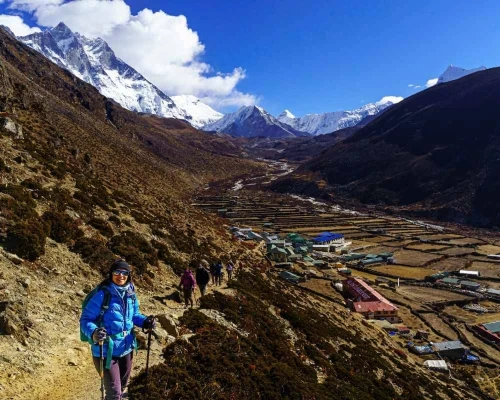
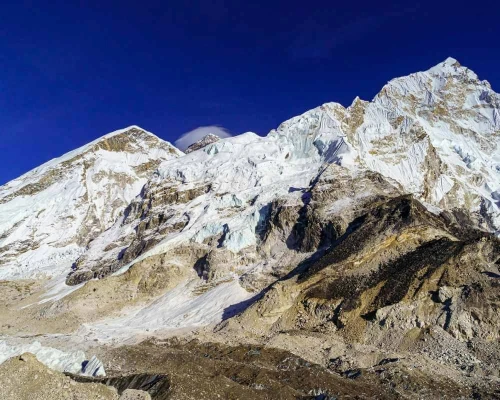
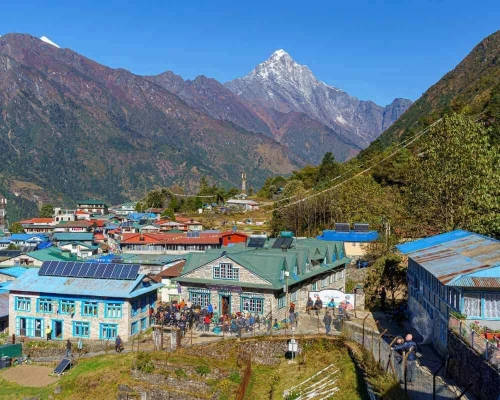
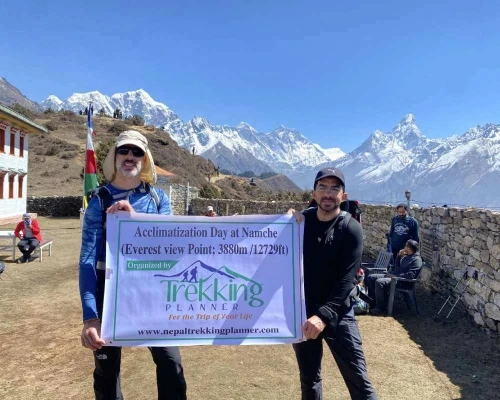

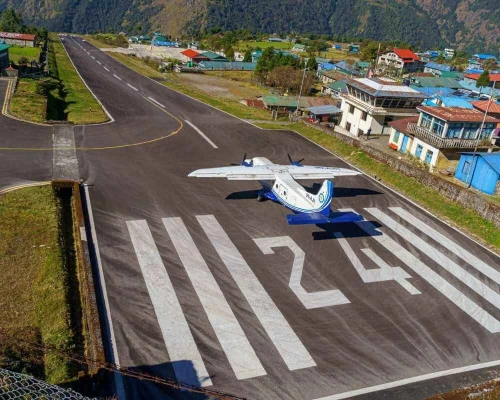

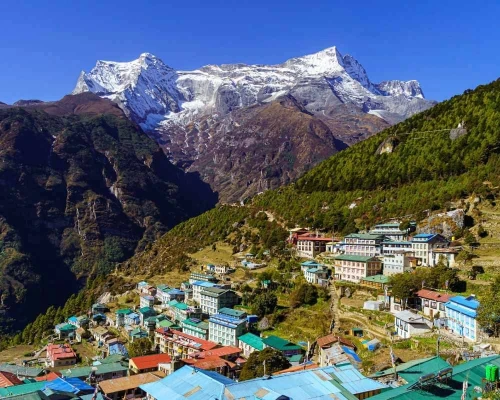

 General
General Upper Body
Upper Body Lower Body
Lower Body Other Essentials
Other Essentials


